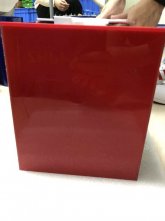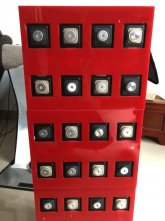Been a lurker here for a few months, I'd like to start by thanking this community for contributing to all the wonderful knowledge on this site.
I am still somewhat new to this, but I have spent time reading most of the long threads here in their entirety, and watching all of Will's vids. I'll try to be concise, but please forgive if my terminology is a bit off.
Back in November, I ordered 2 "partially pre fab" 12v LifePo4's from Xuba (they have not yet arrived). They are 4s 176AH, with pre installed bus bars, wired in series. I plan to use them in an RV solar setup with a couple Sunpower panels and a 2500w inverter.
Link:
https://www.alibaba.com/product-detail/Suitable-for-12V-24V-48V-solar_1600154053852.html
Here's a link to the 280AH Xuba's in the same setup:
https://www.alibaba.com/product-det...html?spm=a2700.shop_index.89.7.202db917TDLMO1
I chose these because the bus bars are not only pre installed, they are also laser welded to the terminals. This seems like an inherently better connection to the soft aluminum terminals on most of these cells, and of course, zero risk I strip any of them during installation.
So I have searched, and can't seem to fid any posts where folks have experience with these. If I have missed them, please let me know....but if not, I have a few questions.
I plan to rig these in a 4s2p configuration, with 2 of the 120a JBDs as the BMS.
What's the best way to attach the BMS leads to the cells? My first thought is to drill a small hole in each bus bar, and use a self tapping screw with a lock washer to attach the leads. But, that seems like it might be dangerous with them attached to live cells.
I could also use a clip (or clamp?) of some sort, but I am not sure that would stay put in a bouncy travel trailer. And, of course, any other suggestions....I am all ears.
Also, I assume these cells, despite being already partially pre-fabbed into a battery pack, are not balanced. And obviously, I can't pull them apart to run them in parallels. So, what do I do? Attach the BMS, charge 'em up to 3.6v and let the BMS trickle balance? I am not in a huge hurry, but I was hoping for a solution that didn't take months at 60mA.
Attached a pic of the actual battery the Xuba folks sent me via email.
Thanks in advance for the help.
View attachment 32847








